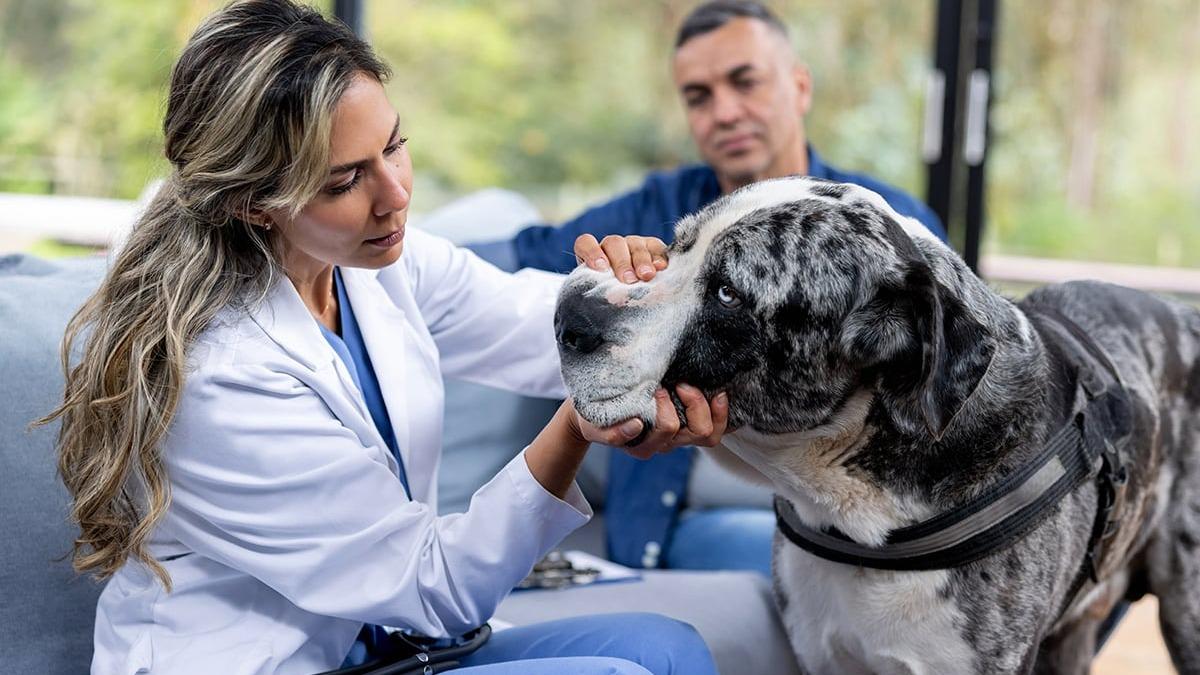If you are a pet parent, you know how important it is to provide the best possible medical care for your furry friend. One common health issue that can affect pets, particularly as they age, is cataracts. Cataracts can cause vision impairment and discomfort for your pet, and treating them can be costly. This begs the question: does pet insurance cover cataracts? In this blog post, we will explore the coverage options for cataract treatment in pet insurance policies, so you can make an informed decision about protecting your pet's eye health.
Cataracts in Pets
What are Cataracts?
Cataracts in pets are a condition where the lens of the eye becomes clouded, causing vision problems. This can occur in dogs, cats, and other animals. Cataracts can develop due to aging, genetics, or as a result of certain medical conditions or injuries. Pets with cataracts may experience blurred vision, difficulty seeing in low light, and may even become completely blind if the condition is left untreated.
What Causes Cataracts?
Cataracts in pets can be caused by a variety of factors. The most common cause is age-related degeneration. Other causes can include genetic predisposition, certain medical conditions such as diabetes or hypothyroidism, trauma to the eye, or exposure to certain medications or toxins. It is important for pet parents to be aware of these potential causes and to seek veterinary care if they notice any changes in their pet's vision. Learn more about how much pet insurance is and how to choose the best pet insurance option.
Signs and Symptoms of Cataracts
Cataracts in pets can cause various signs and symptoms that indicate vision impairment. These include blurred vision, difficulty seeing in low light, increased clumsiness or bumping into objects, squinting or rubbing of the eyes, and a milky or cloudy appearance in the affected eye(s).
In some cases, pets may become completely blind if the condition is left untreated. It is important for pet parents to be vigilant and seek veterinary care if they notice any of these signs, as early detection and treatment can help prevent further vision loss and discomfort for their furry friend. Get your facts here about is Pet Insurance Worth It.
How are Cataracts Diagnosed?
Cataracts in pets can be diagnosed through a comprehensive eye examination performed by a veterinarian. The exam may include a visual inspection of the eye, measuring the eye pressure, and evaluating the clarity and state of the lens. If cataracts are detected, the veterinarian will discuss treatment options and provide guidance on how to manage the condition to help ensure the pet's quality of life. Know more about does pet insurance covers vaccines.
The Treatment of Cataracts
Cataracts in pets can be treated through surgical intervention. The most common procedure is called phacoemulsification, where the cloudy lens is broken down and removed using ultrasound technology. Once the lens is removed, an artificial lens is typically implanted to restore clear vision. This surgery is typically performed by a veterinary specialist and can be quite costly.
How Pet Insurance Can Help
Cataract treatment for pets can be quite costly, especially if surgery is required. Pet insurance can help alleviate the financial burden of the covered treatments for unexpected accidents and illnesses, making it more accessible for pet parents to provide their furry friends with the necessary care. By having pet insurance that covers cataract treatments, pet parents can help ensure that their pets receive the best care with less worry about the high costs. This can not only improve the overall well-being and quality of life for pets with cataracts but also help provide peace of mind for their owners knowing that they are financially prepared for eligible treatments. Learn more about if pet insurance covers spaying and neutering and does pet insurance covers dental.
Does Pet Insurance Cover Cataracts
Pet insurance can be a lifesaver when it comes to covering the eligible costs of cataract treatment for our furry friends. If the cataracts are not a pre-existing condition, and any applicable waiting periods for the policy has passed, many accident & illness pet insurance policies can help alleviate the financial burden of the surgical intervention needed to treat cataracts. This means that pet parents can provide their pets with the necessary care with less worry about the high costs. It is important for pet parents to carefully review their insurance policy to ensure that cataract treatment is covered, so they can act quickly and help prevent further vision loss and discomfort for their pets. Learn more about what pet insurance covers and what pet insurance does not cover.
What are Pre-existing Conditions?
Pre-existing conditions in pet insurance refer to any illnesses, injuries, or health conditions that your pet has prior to obtaining the insurance policy, including during a waiting period. These conditions are typically excluded from coverage, meaning that any treatment or care related to these pre-existing conditions will not be covered by the insurance.
Understanding and being aware of pre-existing conditions is crucial when it comes to selecting a pet insurance policy that provides the necessary coverage for your furry friend's specific needs. Learn more about how does pet insurance work.
What are Waiting Periods?
Waiting periods for pet insurance refers to the amount of time that must pass after purchasing a policy before certain coverage can be used. This means that if a pet develops a health condition or requires treatment during an applicable waiting period, the insurance will not cover the costs. Waiting periods vary depending on the insurance provider and the type of coverage. It is important for pet owners to be aware of these waiting periods and plan accordingly to help ensure that their pets receive the necessary care in a timely manner.
Conclusion
Cataracts can have a significant impact on the vision and overall well-being of our beloved pets. Early detection and treatment are essential in helping prevent further vision loss and discomfort. Pet insurance that covers cataract treatments can be a valuable tool in helping alleviate the financial burden of surgical intervention. By ensuring that cataract treatment is covered in their policy, pet owners can provide their furry friends with the necessary care with less worry about the high costs. This not only helps ensure their pets' health and happiness but can also provide peace of mind for pet parents, knowing that they are financially prepared for necessary treatments.

Creative manager by day, pet enthusiast all the time! After 19 years with my dog (hopefully he wins the award for oldest pet in the world), I enjoy spending my days brainstorming tail-wagging content, and sniffing out the latest trends in the pet world.
The information presented in this article is for educational and informational purposes only and does not constitute or substitute for the advice of your veterinarian.
Barnes, C., et al. "Cataracts in Dogs." VCA Animal Hospitals, n.d., https://vcahospitals.com/know-your-pet/cataracts-in-dogs.
"Cataracts in Dogs." Small Door Veterinary, n.d., https://www.smalldoorvet.com/learning-center/medical/cataracts-in-dogs.
Gibeault, S. "Cataracts in Dogs: What to Know." American Kennel Club, 24 October. 2025, https://www.akc.org/expert-advice/health/cataracts-in-dogs-what-to-know/.












